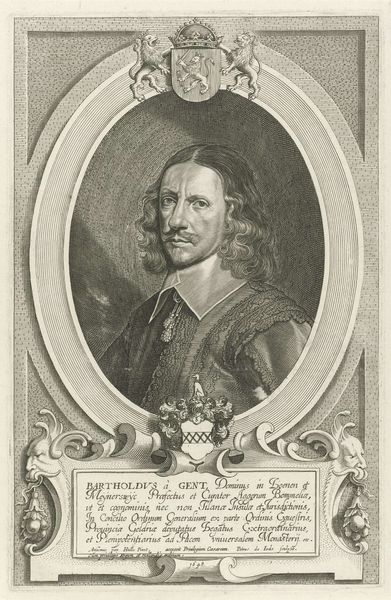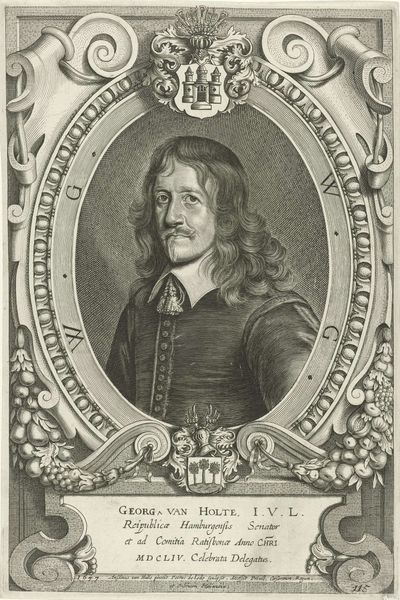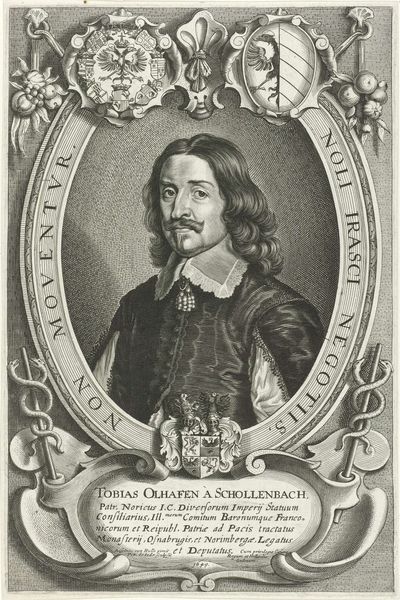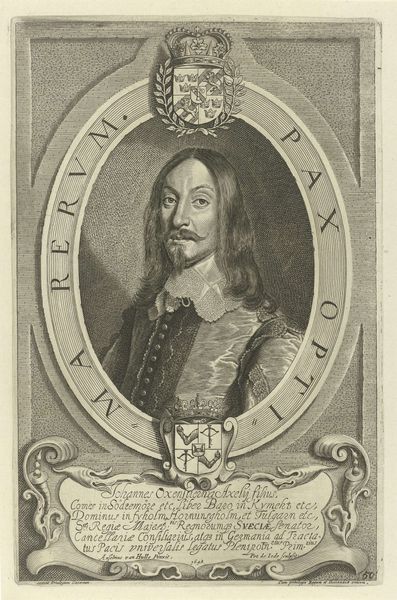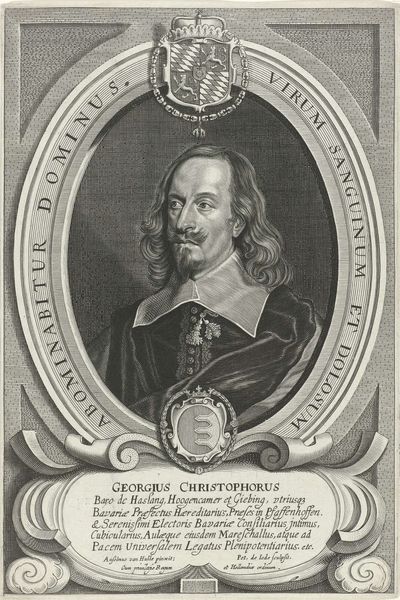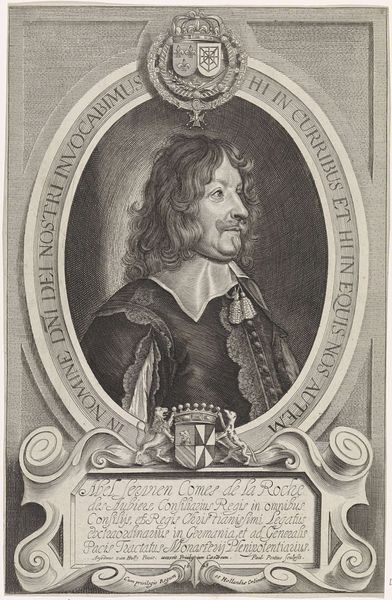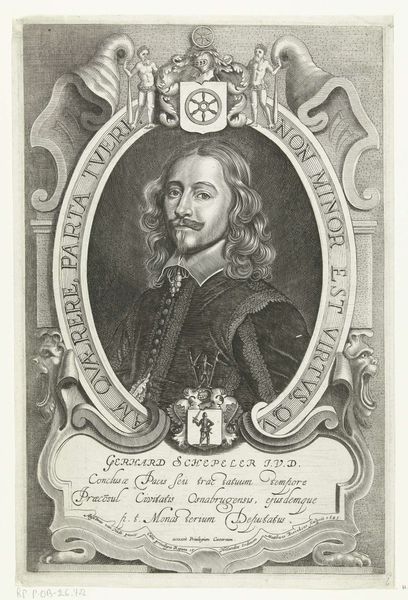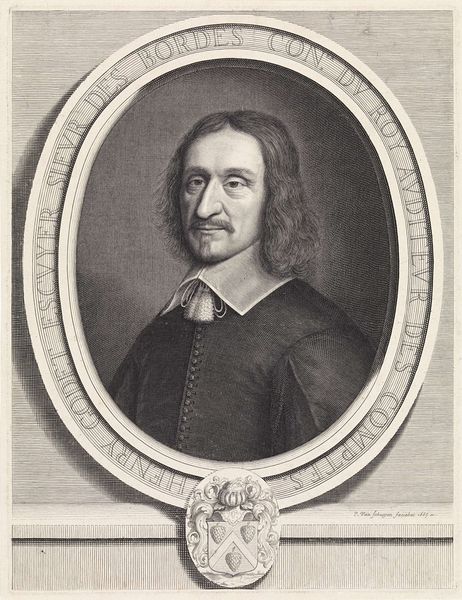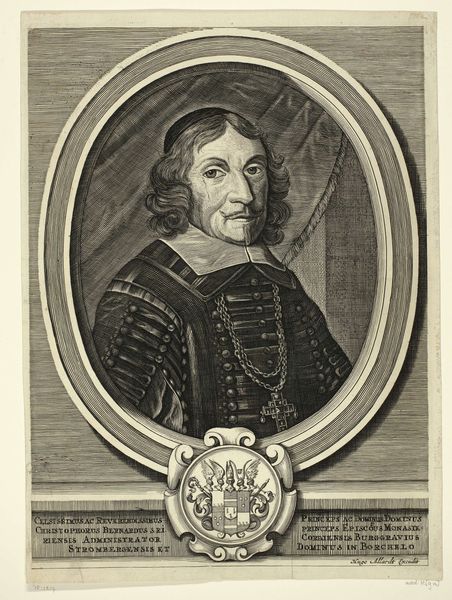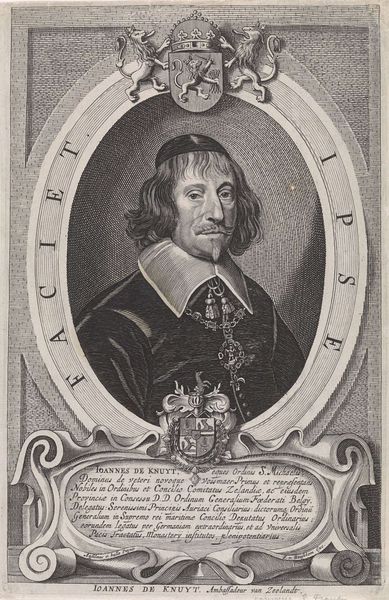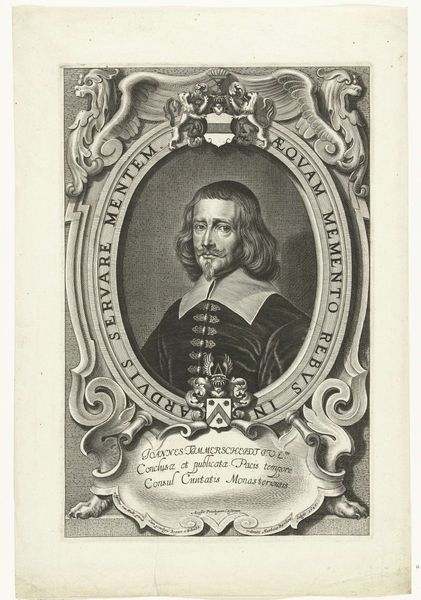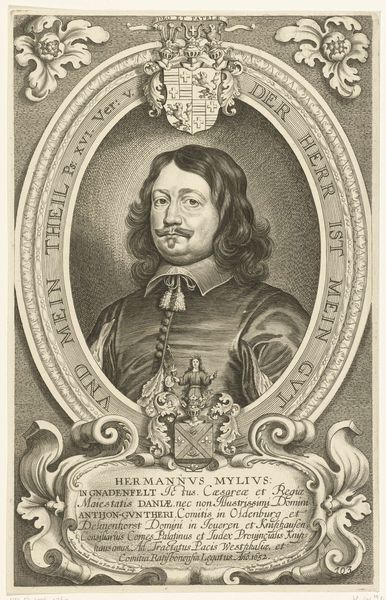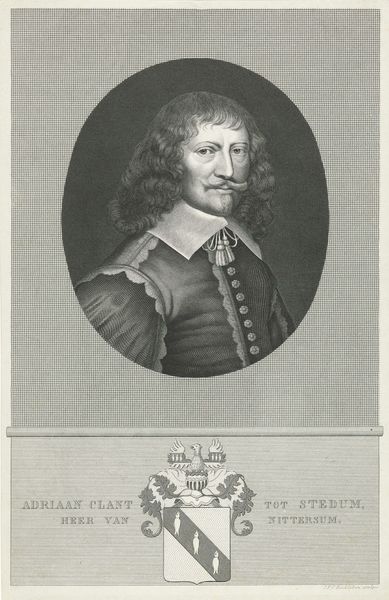
Portret van Barthold van Gent, graaf van Loenen en Meynerswijck 1616 - 1744
print, engraving
portrait
baroque
dutch-golden-age
old engraving style
caricature
history-painting
engraving
Dimensions: height 310 mm, width 198 mm
Copyright: Rijks Museum: Open Domain
Curator: Let's discuss this intriguing engraving from the Dutch Golden Age, dating from 1616 to 1744, a "Portret van Barthold van Gent, graaf van Loenen en Meynerswijck," presently held in the Rijksmuseum. Editor: My immediate reaction is one of somber formality. The sharp lines of the engraving convey a very dignified, almost severe mood. The oval composition traps the man within rigid conceptual boundaries that mirror that severity. Curator: I would argue that severity stems from its incredibly refined lines. See how each carefully etched mark works to construct volume, shadow, and texture. There's a conscious effort to balance stark contrasts of dark and light to model form. The formal framing further reinforces that order, setting up a visual hierarchy and structure around the main subject. The man's identity almost emerges as a consequence of those choices in line. Editor: But within that apparent order, can't we also read the history of power and privilege? Look at the visual markers indicating van Gent's status. The lions flanking his family crest, the ornate border filled with faces, all these elements are a language declaring his place in the Dutch social and political structure of the era. It's about asserting dominance in a time of enormous upheaval and colonial violence. Curator: I acknowledge the broader socio-political elements, but I can't dismiss the brilliance in the rendering of details – the lace collar, the texture of his hair, the fall of light across his face. There's a quiet virtuosity on display here. Notice how that oval frame subtly draws our attention back toward his central visage? It is through that engagement with line that the artist invites closer looking. Editor: I find those decorative, even excessive, embellishments, problematic. These signifiers point to the deep inequalities woven into Dutch society, even in this intimate format. Shouldn’t we be more aware of the politics encoded into portraiture from this era, instead of praising artistry? Curator: It's that dialogue itself, that interplay between structure and content, which creates enduring significance. This has been illuminating. Editor: Indeed. By unraveling these visual threads, we expose larger truths that prompt us to re-evaluate art historical narratives.
Comments
No comments
Be the first to comment and join the conversation on the ultimate creative platform.
